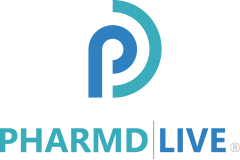As a physician, you face a caseload with multiple risk profiles, conditions and age demographics. While some patients only require an office visit, others require ongoing specialty care. Patients rely, more than ever, on your medical wisdom and assessment of their conditions. Handling this diversity of conditions is not beyond your skills, but seems to require more of them. You have tools that can help you navigate the risk profiles that present in your practice every day. Risk stratification is a piece of Value-Based Care (VBC), which should start to rebalance medicine in favor of efficiency and necessity of care. The two will address appointment shortages among Primary Care Physicians (PCPs). This blog will touch upon the relationship between risk stratification and Chronic Care Management (both of which happen to be VBC concepts) and explore how these methods are benefitting the chronically ill. We will briefly define terms and discuss technology and analytics, designed to carry some of the burden for the physician and practice.
But first, why embark on this? Changing US healthcare is akin to turning a battleship. The US spends the most on healthcare of all developed nations and yet has significant morbidity and mortality in our patient populations. Our healthcare system has undertaken one impactful investment in order to control costs and streamline care delivery. Realistically, the US did not have the means to redesign the healthcare system, but could begin targeted improvements. Value-Based Care, as the new payment and reimbursement model, seeks to wrestle control away from Fee For Service and, in short, establish a “pay-for-quality” system. This is partly to slow down the furious pace of short office visits, which are clearly not beneficial for the provider or the patient. In the case of patients 65+, imagine your actions could begin to slow the churn, the ER visits and the Adverse Drug Events (ADEs), that are currently at a crisis level. VBC programs, like Chronic Care Management (CCM), encourage the use of data to understand what is next for the patient. “Risk stratification is a technique for systematically categorizing patients, based on their health status and other factors. “1 Risk stratification informs CCM by directing clinical efforts by way of comparative data.
Risk stratification as a value-based approach, allocates finite resources to make the largest dent in our disease burden and cost of care. “Risk stratification, in all true sense, is a catalyst in developing successful population health management plans. Only an effective implementation of risk stratification combined with communication and monitoring will guarantee appropriate patient-centric care.”2 From a practical standpoint, risk stratification separates cases into similar categories, and eventually, into smaller groups to understand their likelihood of larger medical events, including heart attack, stroke or hospitalizations. Looking at larger, older studies provides reliable data on the incidence of disease. “Proactive management”, above, refers to the more intensive treatment for a patient heading toward a statistically-predicted crisis. Using this method, patient care is reallocated and hospitalizations, ER visits and ADE’s can be avoided. You can imagine the aggregated effect if all practices operated this way.
How does Chronic Care Management (CCM) relate to Value Based Care and risk stratification? The short answer is that CCM makes use of risk stratification, and in short, “Risk stratification helps practices to better focus on their sickest patients, reduce costs, and improve care.”3 In 2015, Medicare responded to an enormous wave of Baby Boomers, 65+ patients who had more than one chronic condition. Not only did Medicare need to provide healthcare for this wave, it needed to do a better job of controlling spiraling health care costs. Medicare’s answer was CCM. These patients were approved for telehealth visits, advice and medication management – between their regular doctor visits. This was and is a great idea and has been lengthening and improving patient lives and re-engaging patients in their own care.
Risk stratification and CCM help us understand the threats that patients are under. Accordingly, doctors are allocating more resources to higher-risk patients and fewer to low-risk patients. What is the outcome? Risk stratification puts practitioners in a mode of protecting the weak and ‘trusting’ the strong. In this way, patient classes that previously suffered poor outcomes are saved from them. So an 85 year old does not make a trip to the ER and is not moved to a hospital room – both, at that age, are significant risk factors for ADEs and/or mortality. The practice’s quality scores improve because of lower morbidity, hospitalizations and re-hospitalizations, not to mention fewer ADEs.
Under CCM, practices with significant elderly populations will:
-Talk to their patients once a month anywhere from 20 to 60 minutes (virtual visits via telehealth or by phone).
-Ensure medication lists are accurate.
-Ensure the patient is medication compliant.
-Perform risk stratification – to identify patients who need more care.
-Coordinate care with any other offices and labs.
-Inform other providers of patient changes (and encourage same).
-Bill Medicare for the CCM services by CPT Code.
Per Medicare, there is only one CCM physician allowed for reimbursement. Many of these 65+ patients with two chronic illnesses are both vulnerable to and overwhelmed by medicines. Medication Management is critical as they are often not compliant or are double-scripted by double physicians. We know this population has a dangerously high incidence of Adverse Drug Events. From whatever source, attention to their medications can be a life saving/improving effort. We know that many scripts are written for the elderly. In fact, 76% of US pills are prescribed for them. On top of the out-of-control prescribing, these patients will probably have difficulty reading dosages and have limited dexterity and memory. They have even reported injuries from repetitively trying to open all their medicines. CCM is the right thing to do for these patients. The additional care they can receive not only makes them safer but tends to get them interested in their care.
Under VBC, Quality measures and MIPS Scores are quickly becoming the basis of reimbursement for the practice. Having a significant elderly population exposes your practice to metrics around morbidity, hospitalization and drug events. According to Medicare, CCM programs help make that patient class more safe. Having a CCM program can allow your practice to improve its scores for the chronically ill and go to work on the next group. CCM then, can improve your scores, and yes, your patient and practice revenue. The drawback to CCM is that it can be labor intensive, especially at the outset. CCM partners have arisen in recent years – companies who specialize in eldercare and Medicare. Having a partner can make a lot of sense, as they have skills in setting up and delivering CCM and in case management. To a practice, this can mean increased revenue, increased scores, a labor reduction and, most importantly, better health for their patients.
We mentioned earlier that medication management was critically important for the chronically ill. One CCM company, PharmD Live, approaches care from a pharmacological perspective. Unique to the industry, PharmD Live utilizes clinical pharmacists in all of its patient care. Remember that ADEs are rampant among the chronically ill, and a risk factor for hospitalization and mortality. It simply makes sense to address the population’s greatest need first and address it often. PharmD Live employs data-driven predictive analytics in order to look for future patient drug events. Using statistics, patient history, proprietary software and risk stratification, PharmD Live’s clinical pharmacists are actively improving disease states for patients, remotely. The quality of contact that PharmD Live is able to achieve, provides patients with a familiar voice, more trust in their medications and less fear of the unknown. As we mentioned before, CCM programs re-engage the patient in their own care and provide a renewed sense of self-determination.
The patient benefits are significant. The practice benefits run all through this article, things like predictive assessments via risk stratification, improved MIPS scores, bottom-line benefits and even reductions in physician burnout. At this point in our blog, we urge you to take a step and find out more about PharmD Live. Visit our site or call now to speak with a knowledgeable associate. PharmD Live is confident in our skills and we hope to answer questions about your practice – with no obligation. Thank you, and we look forward to connecting with you!








